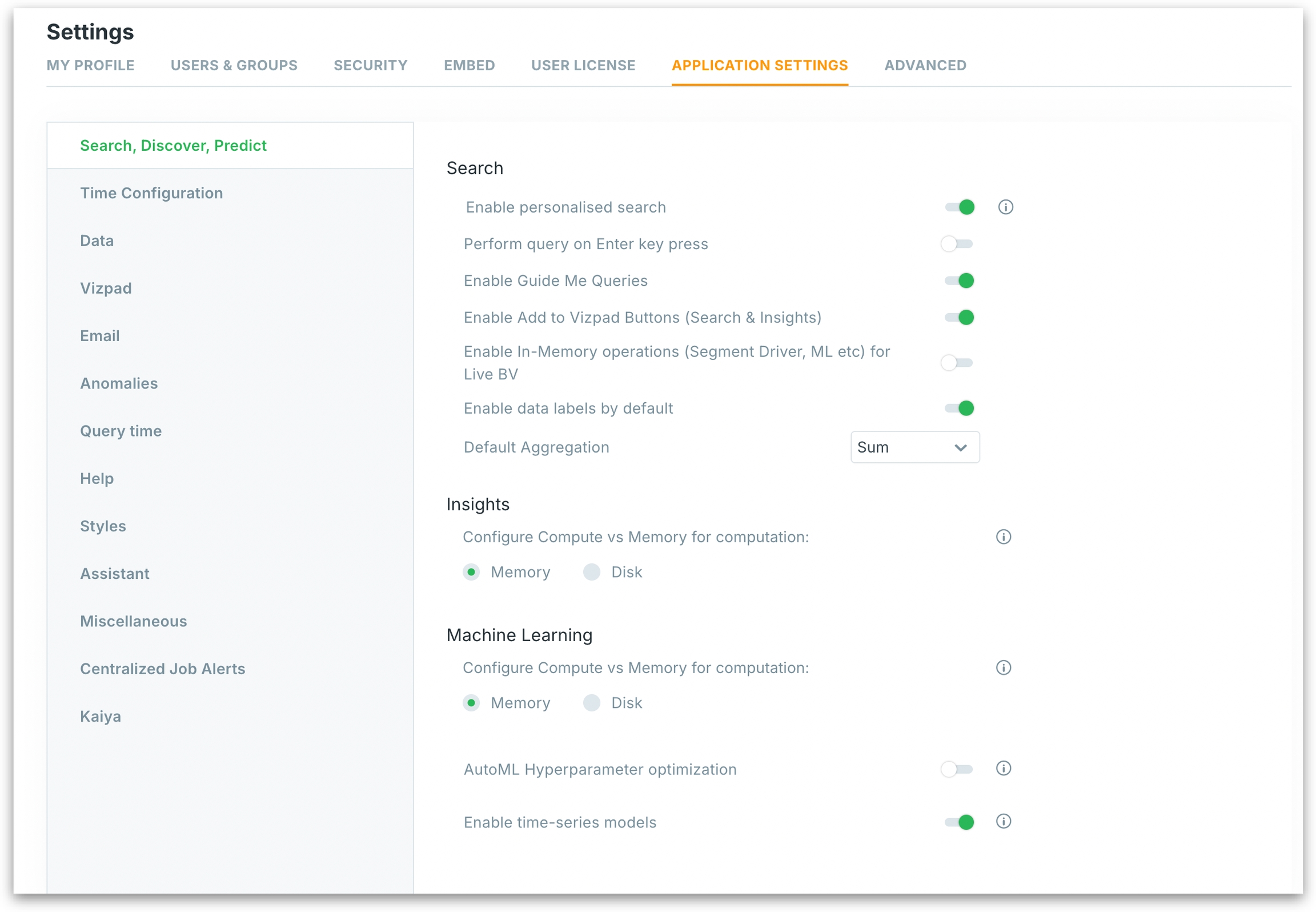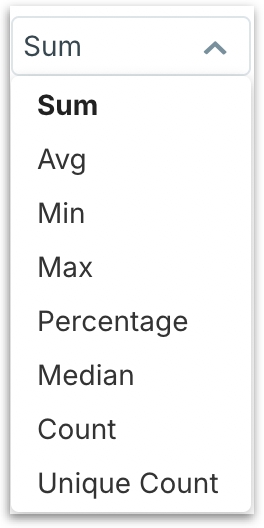Search, Discover, Predict
Configure how users interact with Search, Insights, and ML in Tellius—fine-tune personalization, enable AI-driven query guidance, choose memory vs. disk computation.
This section enables admins to fine-tune how users interact with Tellius's core search, insight generation, and machine learning capabilities.

Search Settings
Customize the behavior of natural language search, guided query experiences, and visualization enhancements.
Enable personalised search When turned on, Tellius uses each user’s historical interactions to prioritize and rank query suggestions, making future searches smarter and more relevant. This helps faster insights for repeat users by learning what matters to them.
Perform query on Enter key press Enabling this setting allows users to instantly trigger a search by pressing Enter on their keyboard, without needing to click the search icon.
Enable Guide Me Queries Activates Tellius's AI-powered query assistant that suggests relevant, contextual questions based on the selected Business View. It's ideal for users unfamiliar with the schema or unsure where to start their exploration.
Enable Add to Vizpad Buttons (Search & Insights) When enabled, this setting shows “Add to Vizpad” button next to each search or insight result to quickly build interactive Vizpads.
Enable In-Memory operations (Segment Driver, ML etc) for Live BV This setting enables Tellius to perform compute-heavy operations like segmentation analysis, machine learning, and driver insights directly in memory—even for Live Business Views connected to systems like Snowflake or Redshift.
In addition to faster performance for these features, this toggle is required to enable downloads and exports of datasets, Insights, and Business Views when using Live connections.
Enabling this requires sufficient system RAM. If your environment has limited memory, consider keeping this disabled to avoid compute bottlenecks.
Enable data labels by default Ensures that charts automatically include numeric labels—like value annotations on bars, lines, or pie slices—making data easier to interpret at first glance.
Default Aggregation Defines how Tellius summarizes numeric fields in Search and Insights by default.

Insights
The Genius Insights engine generates advanced insights using machine learning algorithms, which require temporary storage for intermediate computation data.
You can configure where this intermediate data is stored:
Memory (RAM): Best for high-performance computation. Using RAM results in faster insights, especially for small to mid-sized datasets. However, it requires more memory, which may not be suitable for very large workloads.
Disk: Suitable when working with large datasets or limited memory environments. While storing data on disk reduces RAM usage, it may slightly impact insight generation speed. In most cases, disk performance is sufficient.
Machine Learning Settings
This configures how Tellius performs predictive analytics and builds machine learning models behind the scenes.
Configure Compute vs Memory for computation Just like the Insights section, ML workloads can be set to compute:
Memory: Best for speed and iterative modeling. Best for small to medium datasets but requires more system memory.
Disk: Ideal for larger datasets or shared environments with limited memory. In most cases, disk-based processing is sufficient.
AutoML Hyperparameter optimization When enabled, Tellius automatically tunes model parameters (e.g., learning rate, regularization, tree depth) to maximize model accuracy but may increase training time. If disabled, models will use default parameters, reducing computation time.
Enable time-series models If enabled, supports creation of forecasting models using timestamped data like ARIMA, Prophet, and advanced ML-based time series algorithms. This is critical for use cases such as demand prediction, sales forecasting, and trend analysis.
Was this helpful?